Unit DLight
SKU:U136
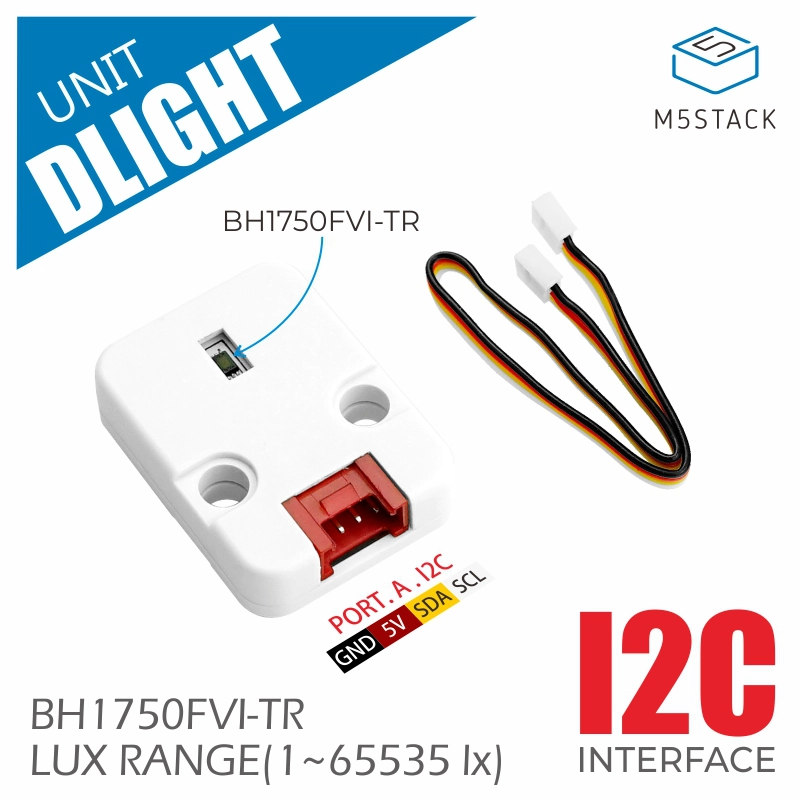
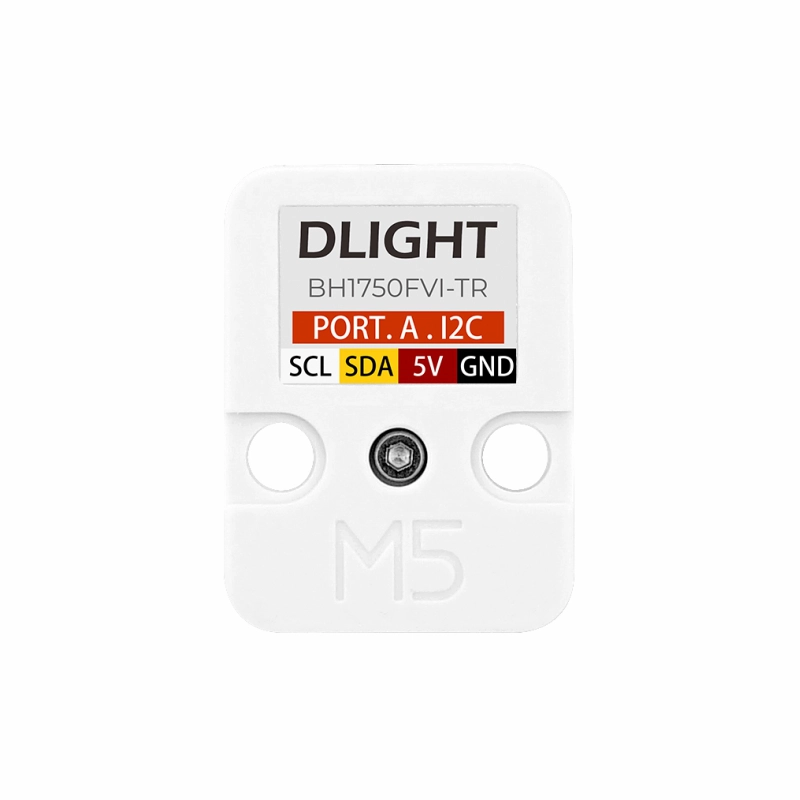
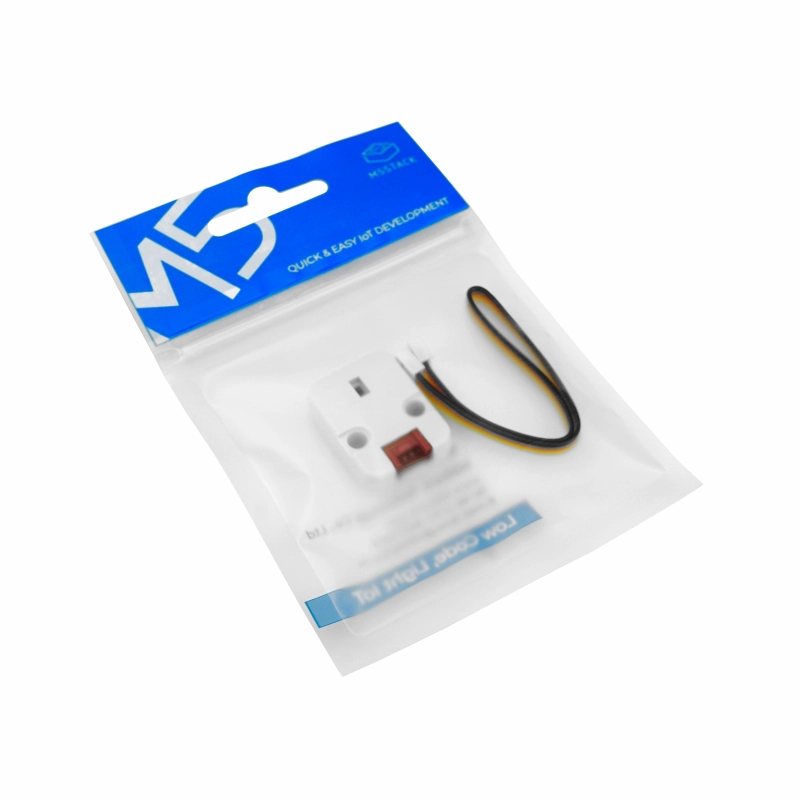
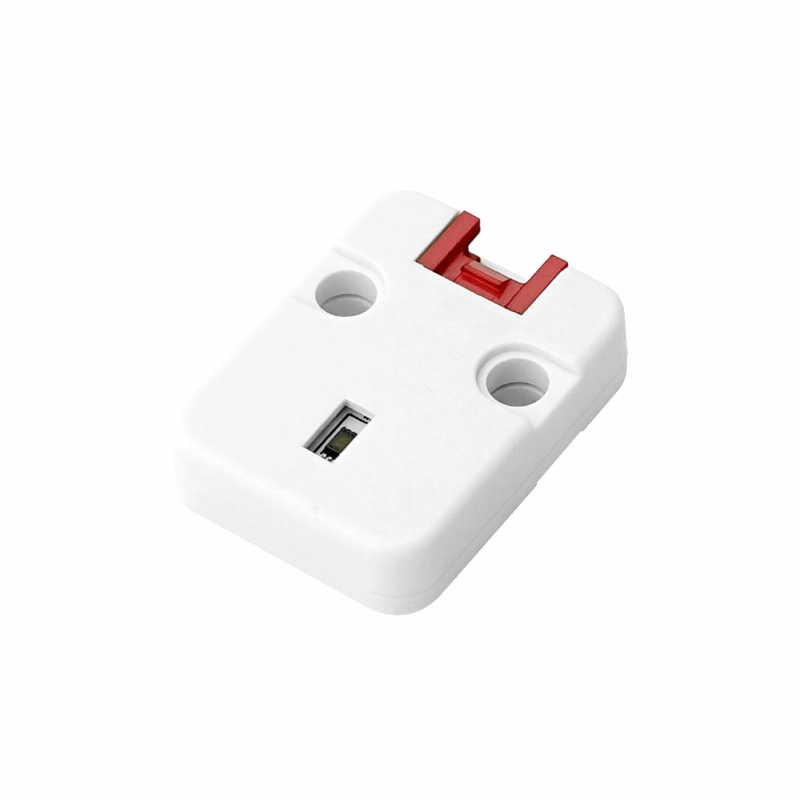

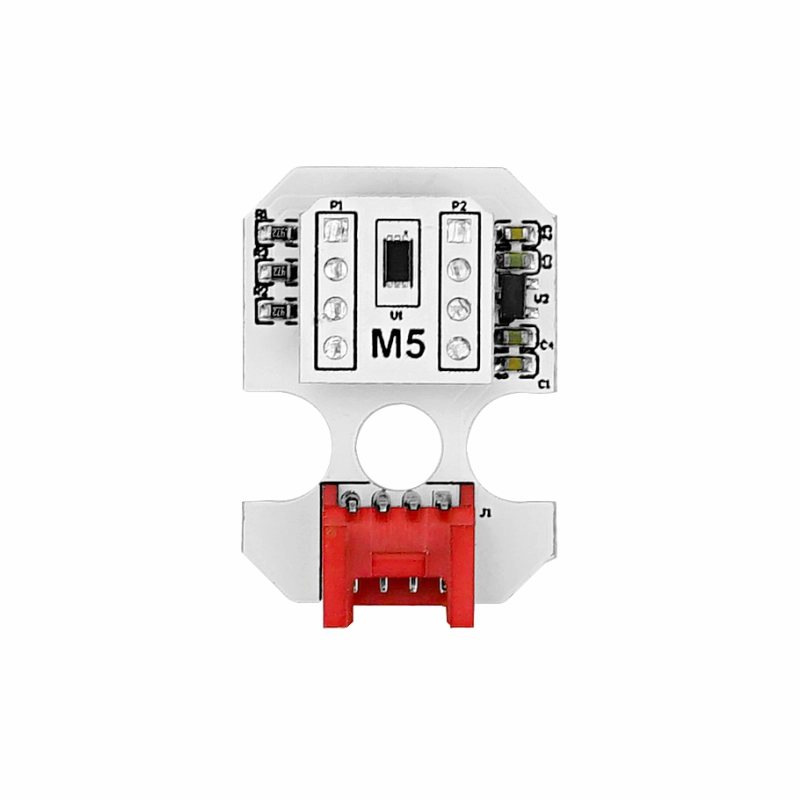






Description
Unit DLight is a digital ambient light detection sensor. The hardware uses a BH1750FVI illuminance sensor IC (I2C interface), with built-in 16-bit AD conversion supporting (1 ~ 65535 lx) illuminance value detection. It features a small size and low power consumption, making it suitable for various illuminance detection and light control adjustment scenarios.
Features
- I2C communication interface (addr: 0x23)
- Digital conversion of illuminance
- Low light source dependency (can detect light sources: incandescent, fluorescent, halogen, white LED, sunlight)
- Detection range (1 ~ 65535 lx)
- HY2.0-4P interface
Includes
- 1 x Unit DLight
- 1 x HY2.0-4P Grove connection cable (20cm)
Applications
- Illuminance detection
Specifications
| Specification | Parameter |
|---|---|
| Sensor Model | BH1750FVI |
| Illuminance Detection Range | 1 ~ 65535 lx |
| Communication Interface | I2C communication interface (addr: 0x23) |
| Peak Sensitivity Wavelength Typical Value | 560nm |
| Operating Current | < 5V@143uA |
| AD Conversion Depth | 16bit |
| Product Size | 32.0 x 24.0 x 8.0mm |
| Product Weight | 4.8g |
| Package Size | 138.0 x 93.0 x 9.0mm |
| Gross Weight | 10.0g |
Schematics
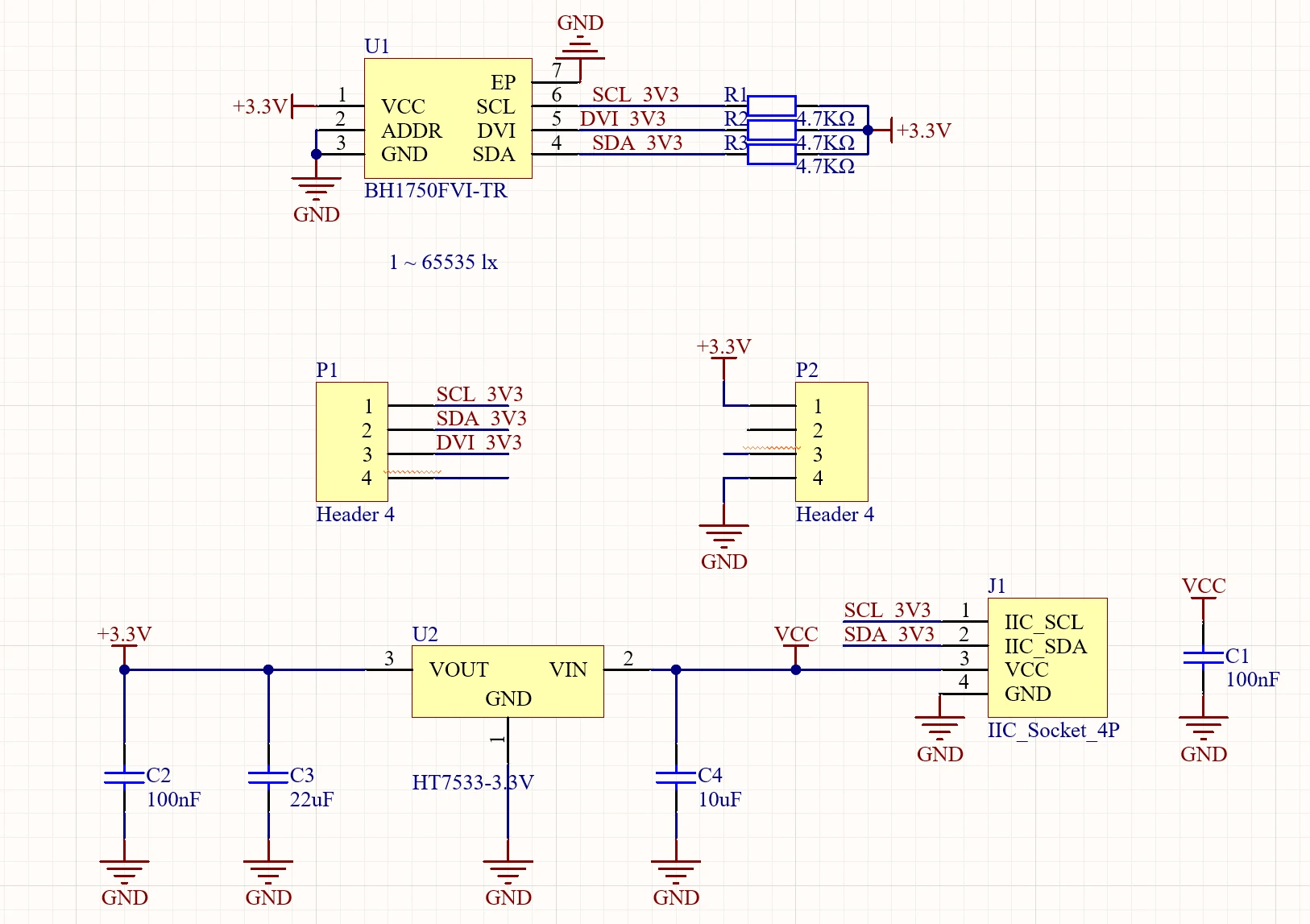
PinMap
Unit DLight
| HY2.0-4P | Black | Red | Yellow | White |
|---|---|---|---|---|
| PORT.A | GND | 5V | SDA | SCL |
Model Size
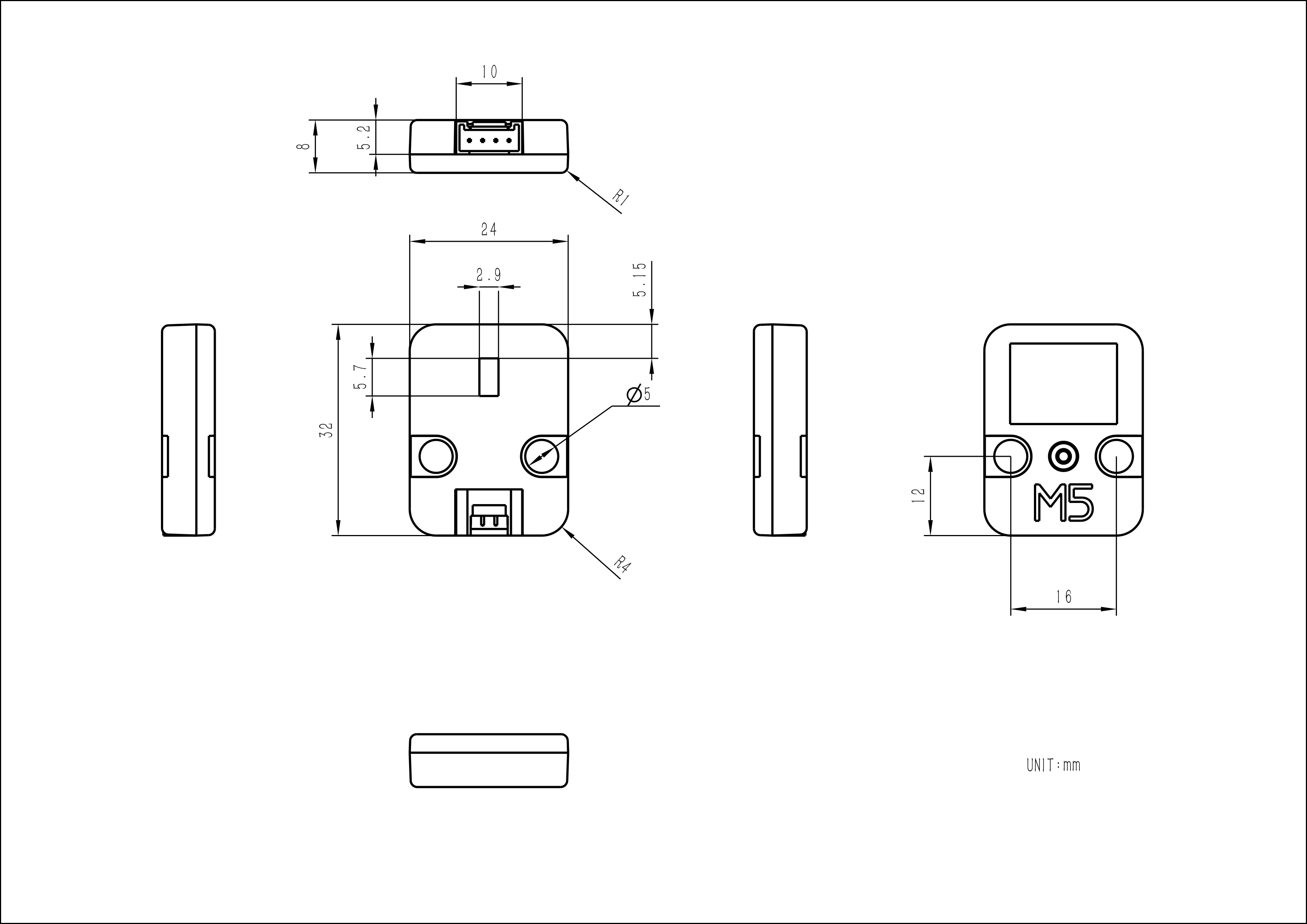
Datasheets
Softwares
Arduino
- Unit DLight Arduino Library
- Unit DLight Example with M5Atom
- Unit DLight Example with M5Core
- Unit DLight Example with M5Core2
- Unit DLight Example with M5StickC
- Unit DLight Example with M5StickCPlus
UiFlow1
UiFlow2
Home Assistant
Video
- Illuminance Value Detection